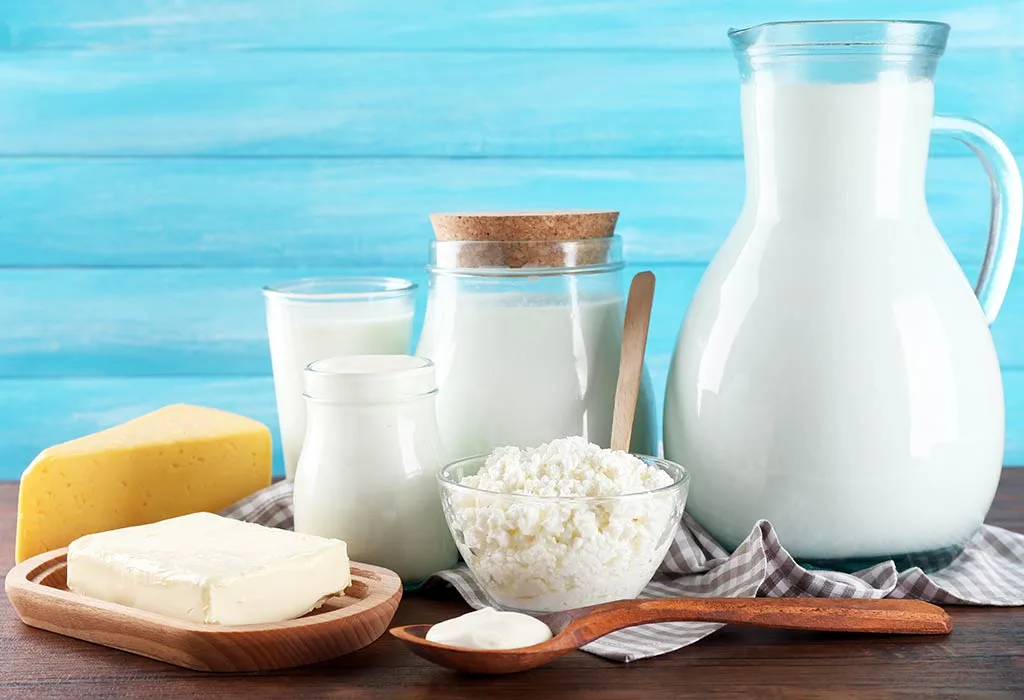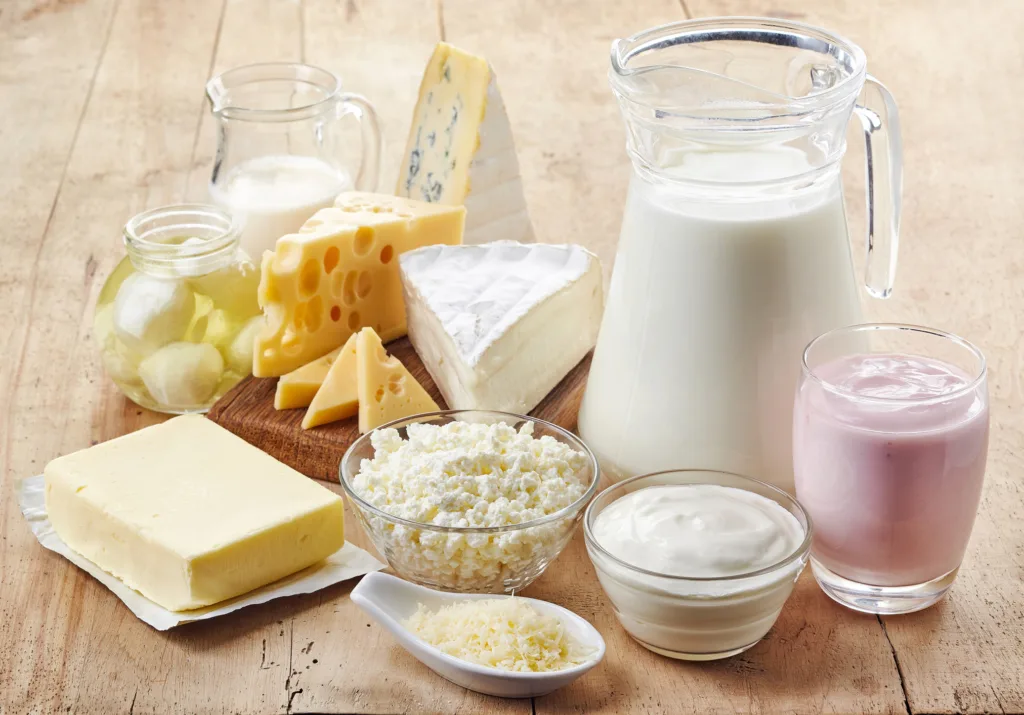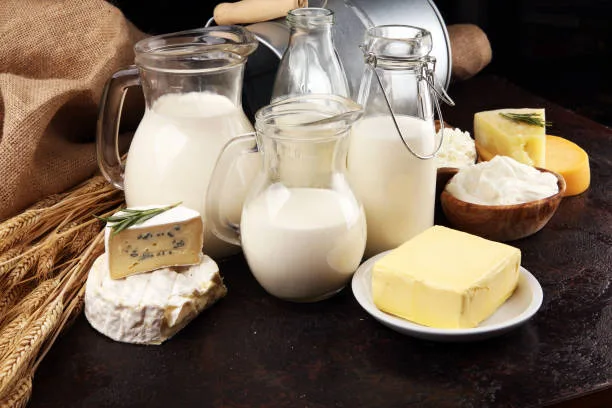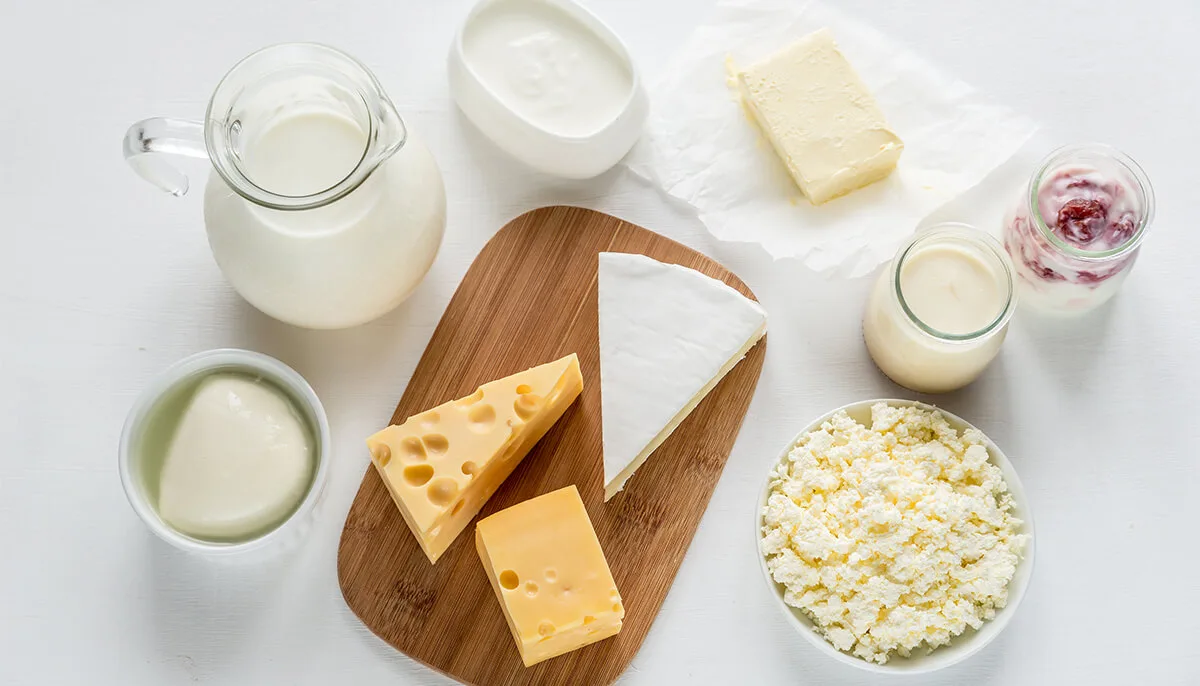Dairy products like milk, cheese, and yogurt are dietary staples for many people. But when it comes to weight loss, the role of dairy is complex and often misunderstood. Unraveling the science behind how dairy affects weight can help determine if and how to include it in a balanced, healthy diet.
The importance of dairy in the modern diet makes understanding its relationship with weight critical. With obesity on the rise globally, the impact of our food choices is under scrutiny. Dairy specifically has been hotly debated for its effects on weight management. But the answer is not simple, as research has shown mixed results. To optimize our diets for health and wellbeing, we must closely examine the pros and cons of dairy consumption.

The Role of Dairy in a Balanced Diet
Dairy products provide nutritional value that can benefit health. Milk, cheese, and yogurt contain high-quality protein, calcium, vitamin D, vitamin B12, potassium, and more. These nutrients are especially important for bone health and muscle maintenance. Dairy can also help prevent conditions like osteoporosis that result from calcium deficiency.
Getting enough protein is also essential for preserving lean muscle mass when trying to lose weight. The protein in dairy foods helps support muscle growth after exercise and can aid muscle recovery. Yogurt in particular is a great portable protein source that you can eat anywhere on-the-go.
When consumed in moderation, dairy may have a place in a nutritious diet. The key is choosing low or non-fat versions and keeping portions reasonable. While whole milk and full-fat cheeses do contain healthy nutrients, their saturated fat and calorie content makes them poor choices if watching your weight.
The USDA recommends 2-3 servings of low-fat or non-fat dairy per day in their dietary guidelines. This level of intake provides nutritional benefits without overconsumption of calories or fat. Overall, dairy can complement a balanced diet that includes ample vegetables, fruits, whole grains, lean proteins, and healthy fats. Milk, yogurt, and cheese add flavor, nutrients, and satisfaction to meals and snacks. Just be mindful of serving sizes to keep calories in check.

Dairy and Weight Loss: The Science Behind It
The real debate centers around how dairy specifically impacts weight management and fat loss. The science is complicated, with research showing mixed results. Dairy may influence weight through several pathways:
Metabolic Effects
Several studies indicate dairy boosts metabolism slightly, which helps burn extra calories. The protein and calcium in dairy may increase fat breakdown and preserve metabolism-revving muscle mass when losing weight. This effect is modest but can contribute to overall calorie deficit.
There are a few reasons why dairy may positively impact metabolism:
- The protein requires extra energy for the body to digest and process. This bumps up calorie burn slightly.
- Calcium and vitamin D help fat cells work optimally and influence fat metabolism.
- Conjugated linoleic acid (CLA) in dairy may help turn on fat burning genes.
- By supporting muscle growth and maintenance, dairy helps sustain an active, efficient metabolism.
While small, these metabolic influences can promote weight loss over time when combined with reduced calorie intake.
Fat Storage
Conjugated linoleic acid (CLA) in dairy may help reduce body fat storage. CLA is a type of heart-healthy fatty acid that dairy products contain. Research shows it may help diminish fat formation and encourage fat breakdown, though more studies are needed.
The mechanisms behind CLA’s fat-fighting effects include:
- Reducing lipoprotein lipase activity – this enzyme converts calories into body fat, so less activity means less fat storage.
- Increasing fat cell apoptosis – this programmed cell death shrinks existing fat cells and lowers body fat.
- Stimulating fat breakdown by PPAR-gamma – CLA activates this receptor involved in fat metabolism.
So by limiting fat production and storage, CLA can slowly reduce overall body fat percentages.
Appetite Regulation
Casein and whey, proteins in dairy, may suppress appetite. Their influence on hunger-related hormones like ghrelin could promote feelings of fullness. This helps reduce excessive calorie intake.
Research suggests dairy proteins impact appetite pathways in the body:
- Casein forms a gel during digestion, slowing stomach emptying and delaying the hunger response.
- Whey protein is digested quickly, stimulating appetite-reducing hormones like cholecystokinin.
- Bioactive peptides released during dairy protein digestion may also influence satiety signals.
The end result is a prolonged feeling of satisfaction after eating dairy foods, reducing overall calories consumed. This modest appetite-regulating effect can promote gradual weight loss over time.
So evidence suggests potential weight loss benefits, but other studies show null or negative effects. More research is still needed on the mechanisms involved. But including dairy may contribute to weight management through several pathways including metabolism, fat storage, and appetite.

Dairy Products to Include in Your Diet
Focusing on low or non-fat dairy options provides nutritional benefits without the extra calories of whole-fat products. Here are some of the best choices:
Non-fat or Low-fat Milk
Packed with protein, calcium, B vitamins, and electrolytes like potassium, milk supports bone and muscle health. Limit to 1-2 cups daily. Choose unsweetened varieties and use non-fat milk when cooking oatmeal or cream soups to cut calories.
Non-fat Plain Greek Yogurt
Higher in protein than regular yogurt, Greek yogurt promotes satiety and muscle maintenance. Its probiotics may also aid digestion. 1 serving is about 3/4 cup. Greek yogurt’s thick, creamy texture makes it perfect for breakfast parfaits too.
Low-fat Cottage Cheese
A fast, convenient source of casein protein, cottage cheese has only 80-100 calories per 1/2 cup serving. Its calcium content is also impressive. Enjoy it topped with fresh fruit, use in place of ricotta in lasagna, or bake into protein-packed muffins.
Part-skim Mozzarella Cheese
With about 80 calories per ounce, part-skim mozzarella adds a protein boost and savory flavor. Sprinkle on salads or melt over chicken for a calcium kick. Part-skim mozzarella is great on homemade pizzas too.
Non-fat or Low-fat Cheese Slices
Great for sandwiches and snacks, low-fat cheddar or Swiss cheese slices provide calcium and protein without the high saturated fat of regular cheese. One slice is about 50 calories. Enjoy on a turkey sandwich or veggie wrap for a slimming lunch option.
Choosing these lower calorie dairy options provides all the nutritional perks without derailing your diet. Just be mindful of portions and enjoy them in balance with other healthy foods.
Dairy Products to Limit or Avoid
Some higher calorie dairy products may negatively impact weight loss efforts. These include:
Whole Milk
While nutritious, the high saturated fat and calorie load of whole milk (146 calories per cup) can contribute to excess energy intake. Low or non-fat milk is a better option for reducing calories while still getting dairy’s benefits.
Full-fat Cheese
Regular cheeses like cheddar, Colby, Monterey jack, and Swiss contain over 100 calories and 7-8 grams of saturated fat per ounce. Limit or avoid these options if watching your weight. Choose part-skim, low-moisture cheese instead.
Full-fat Ice Cream
The epitome of indulgence, ice cream is very energy-dense and easy to overeat. Just a half-cup of regular ice cream can have upwards of 200 calories and 15 grams of saturated fat. Have sparingly as an occasional treat, and stick to single-serve pops or bars to control portions.
Whole Milk Yogurt
Though nutritious, whole milk yogurt packs more calories, fat, and sugar than non-fat varieties. Stick to non-fat, low-sugar Greek yogurt for weight management. The thicker texture provides satisfaction too.
Cream Sauces and Creams
Heavy cream and cream-based sauces deliver major calories and fat. Replace with low-fat milk or plain Greek yogurt in recipes for lighter, waistline-friendly versions.
Swapping out full-fat dairy for low or non-fat versions allows you to enjoy their benefits without drawbacks for your waistline. You can also limit high-calorie, sweetened dairy treats like milkshakes and ice cream.
Lactose Intolerance and Dairy Alternatives
Lactose intolerance makes digesting dairy difficult for many people. Symptoms like bloating, gas, and abdominal pain deter dairy consumption. In these cases, non-dairy alternatives provide options:
Non-Dairy Milks
Soy, almond, oat, coconut, and rice milk offer creamy texture and calcium. Check labels to choose unsweetened versions low in added sugars. Many even come fortified with vitamin D for an extra nutrient boost.
Lactose-free Milk and Yogurt
These contain lactase enzymes to help break down lactose, reducing digestion issues. The nutritional profile mimics dairy milk and yogurt. Lactose-free Greek yogurt can provide tons of protein without the belly problems.
Non-Dairy Cheeses
Made from nuts or soy, non-dairy cheeses provide an lactose-free, vegan alternative. Look for low sodium options and stick to part-skim varieties to keep fat in check.
Non-Dairy Frozen Desserts
Sorbets, non-dairy ice cream, and popsicles give cooling refreshment without lactose. Pick items low in added sugars. Coconut milk-based ice creams offer richness without the dairy.
Calcium-fortified Foods
Many non-dairy milks and juices are fortified with calcium and vitamin D. Check the label when purchasing plant-based alternatives to get these essential bone-building nutrients.
With lactose-free and plant-based choices, those avoiding dairy can still get calcium, protein, and enjoyment from “dairy-like” foods. Try different products to find tastes and textures you like. Your local health food grocer likely carries many delicious options too.
Personalized Approach to Dairy Consumption
With the complex relationship between dairy and weight, finding your optimal intake depends on individual factors. Consider the following:
- Dietary Preferences – Dairy free, vegetarian, or vegan diets warrant alternatives to meet calcium and protein needs. A registered dietitian can help plan balanced nutrition within your chosen eating pattern.
- Lactose Tolerance – Those with intolerance do best limiting or avoiding traditional dairy products. Lactose-free and non-dairy choices let you consume “dairy” while preventing unwanted symptoms.
- Weight Goals – If seeking weight loss, emphasize non or low-fat dairy options in moderate amounts as part of reduced calorie diet. Higher fat dairy is fine for maintaining weight.
- Medical Conditions – Food allergies, hormone-related cancers, and other conditions may warrant specialized nutrition plans. Work with your healthcare provider to tailor diet appropriately.
- Nutritional Needs – Women, children, athletes, or older adults have unique dairy recommendations based on life stage. A registered dietitian nutritionist can provide personalized guidance.
Make the most informed choices by consulting a registered dietitian nutritionist (RDN). An RDN can help devise an eating plan tailored for your health history, goals, and preferences. They keep up with the latest food and nutrition research to guide your diet choices. Consider scheduling a consultation if you need specialized support.

Conclusion
The connection between dairy and weight loss is multi-faceted. While dairy products provide valuable nutrients, their impact on weight depends on the type and amount consumed. Current research indicates potential benefits from dairy foods like milk, yogurt, and cheese – when keeping calories in check by choosing low fat or non-fat items. Those managing lactose intolerance can also find alternatives in dairy-free products.
But as with any diet change, individual factors shape the healthiest approach. Consider your own needs, preferences and objectives when planning dairy intake as part of overall lifestyle choices. Small adjustments may help optimize dairy’s role in achieving and maintaining a healthy body weight over the long-term. Experiment to find the tastiest lower calorie dairy options that fit your goals.
Encourage Reader Engagement
Thanks for reading! Be sure to subscribe to our free newsletter for more insights on food, nutrition, health and weight loss to help you on your wellness journey. And explore related posts on the site for further guidance on making the best choices for your needs. Your health and wellbeing are our passion, and we’re here to support you.
Thank you for reading this post, don't forget to subscribe to our free newsletter
!
